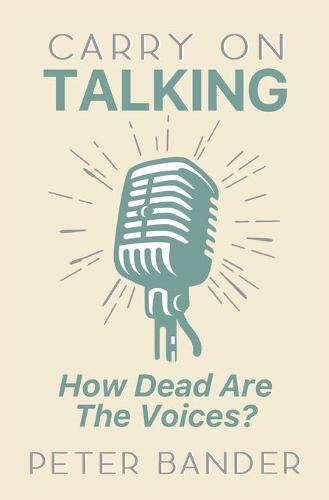Readings Newsletter
Become a Readings Member to make your shopping experience even easier.
Sign in or sign up for free!
You’re not far away from qualifying for FREE standard shipping within Australia
You’ve qualified for FREE standard shipping within Australia
The cart is loading…






This title is printed to order. This book may have been self-published. If so, we cannot guarantee the quality of the content. In the main most books will have gone through the editing process however some may not. We therefore suggest that you be aware of this before ordering this book. If in doubt check either the author or publisher’s details as we are unable to accept any returns unless they are faulty. Please contact us if you have any questions.
Carry on Talking: How Dead Are the Voices? is the story of the advent of Electronic Voice Phenomena (EVP) - a method of communication between the dead and the living using electronic devices - pioneered in Europe by Friedrich Jurgenson in the 1960s, and later by Konstantin Raudive in the seventies.
Peter Bander, a psychologist who had lectured on religious education and ethics, had joined British publisher Colin Smythe Ltd in 1966, and in 1969 was asked by Smythe to evaluate Dr. Konstantin Raudive’s research with a view to publishing the work in the English language. Raudive’s book had been published in Germany in 1968 under the title: Unhoerbares wird hoerbar (The Inaudible Becomes Audible).
Bander was understandably sceptical when first confronted with the phenomena. He stated: ‘My first reaction to the book was negative because the claims made by the author appeared to me not only far-fetched but outrageous … The thought of dead people communicating through a tape recorder seemed ludicrous and too silly to be taken seriously’.
Unbeknown to Bander, Smythe had conducted his own experiments which proved to be conclusive. This led to Raudive’s book being published in the English language under the title, Breakthrough: An Amazing Experiment in Electronic Communication with the Dead (1971) - now considered by many to be a classic in the genre - and put Bander at the centre of the controversial yet fascinating subject of life after death.
$9.00 standard shipping within Australia
FREE standard shipping within Australia for orders over $100.00
Express & International shipping calculated at checkout
This title is printed to order. This book may have been self-published. If so, we cannot guarantee the quality of the content. In the main most books will have gone through the editing process however some may not. We therefore suggest that you be aware of this before ordering this book. If in doubt check either the author or publisher’s details as we are unable to accept any returns unless they are faulty. Please contact us if you have any questions.
Carry on Talking: How Dead Are the Voices? is the story of the advent of Electronic Voice Phenomena (EVP) - a method of communication between the dead and the living using electronic devices - pioneered in Europe by Friedrich Jurgenson in the 1960s, and later by Konstantin Raudive in the seventies.
Peter Bander, a psychologist who had lectured on religious education and ethics, had joined British publisher Colin Smythe Ltd in 1966, and in 1969 was asked by Smythe to evaluate Dr. Konstantin Raudive’s research with a view to publishing the work in the English language. Raudive’s book had been published in Germany in 1968 under the title: Unhoerbares wird hoerbar (The Inaudible Becomes Audible).
Bander was understandably sceptical when first confronted with the phenomena. He stated: ‘My first reaction to the book was negative because the claims made by the author appeared to me not only far-fetched but outrageous … The thought of dead people communicating through a tape recorder seemed ludicrous and too silly to be taken seriously’.
Unbeknown to Bander, Smythe had conducted his own experiments which proved to be conclusive. This led to Raudive’s book being published in the English language under the title, Breakthrough: An Amazing Experiment in Electronic Communication with the Dead (1971) - now considered by many to be a classic in the genre - and put Bander at the centre of the controversial yet fascinating subject of life after death.